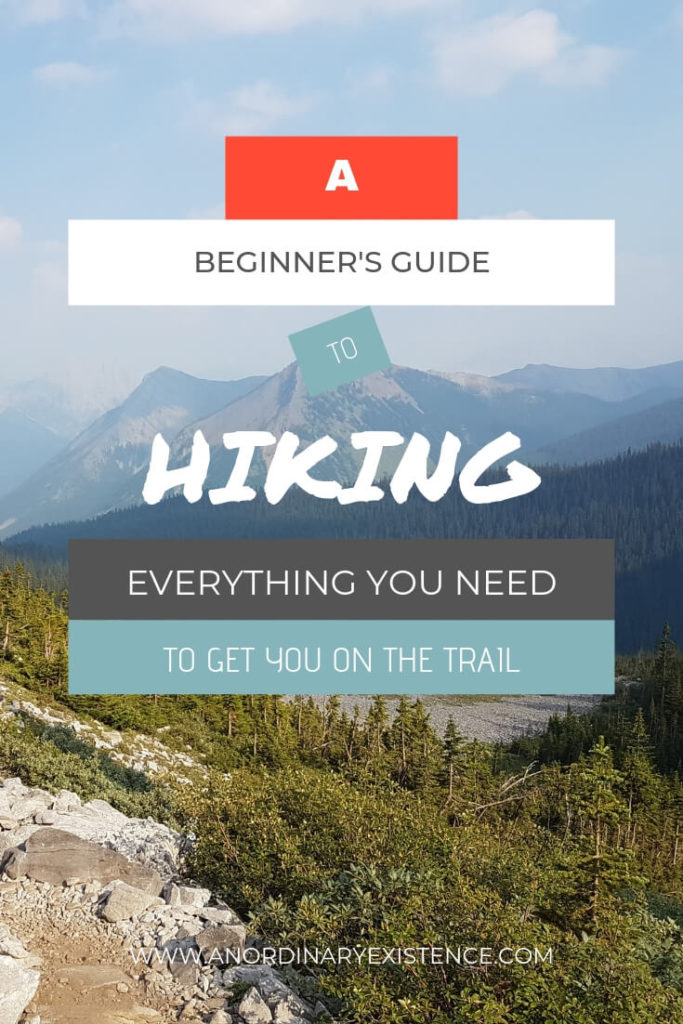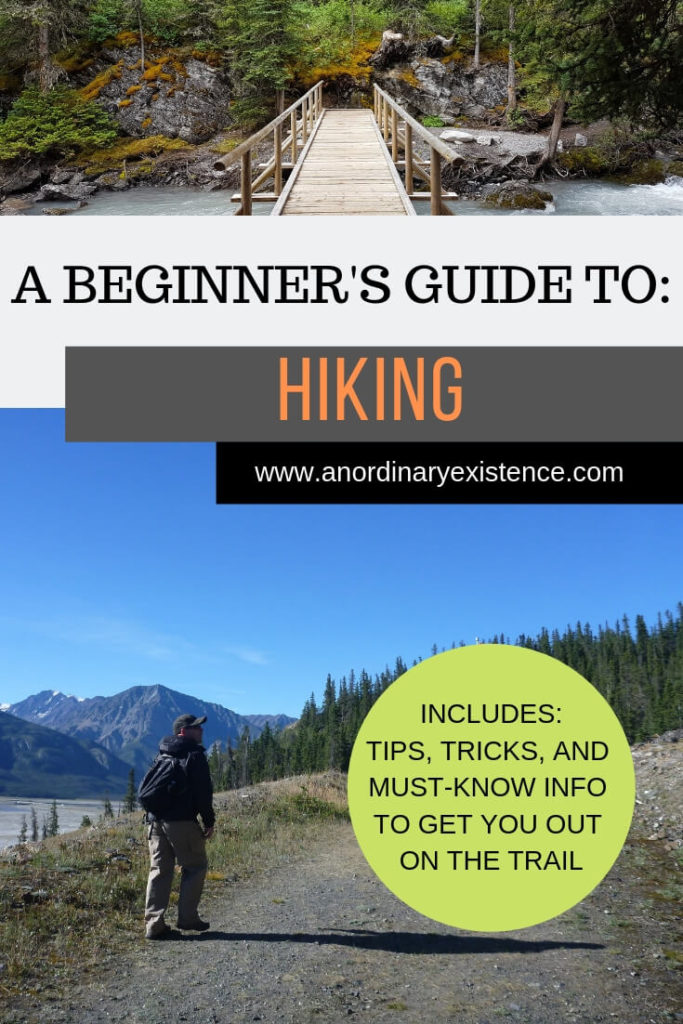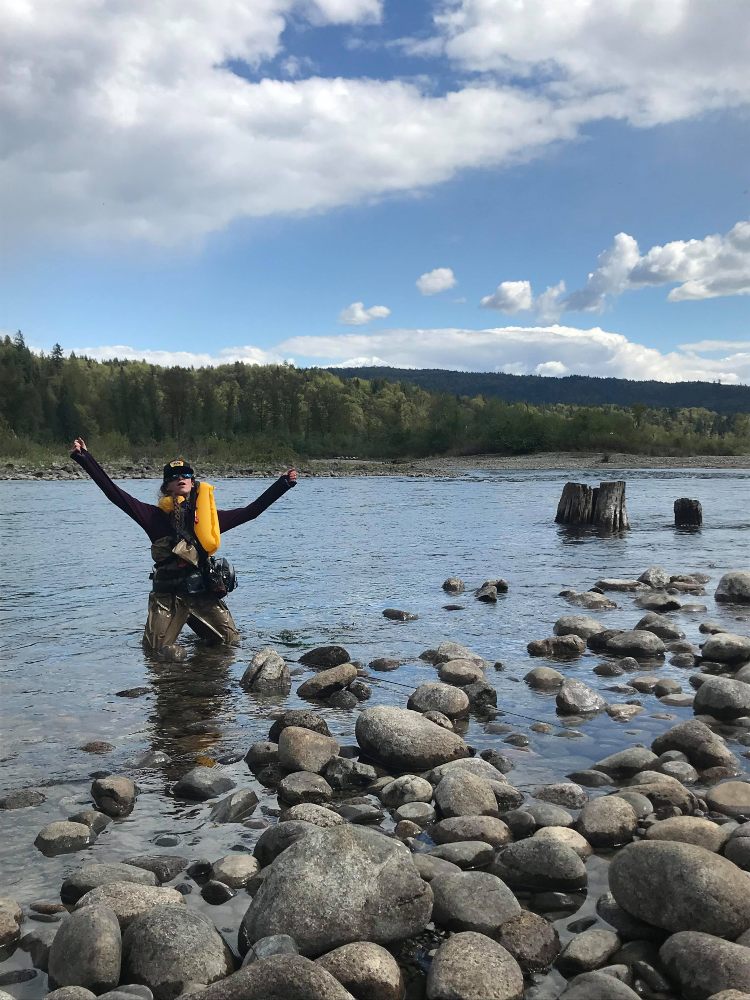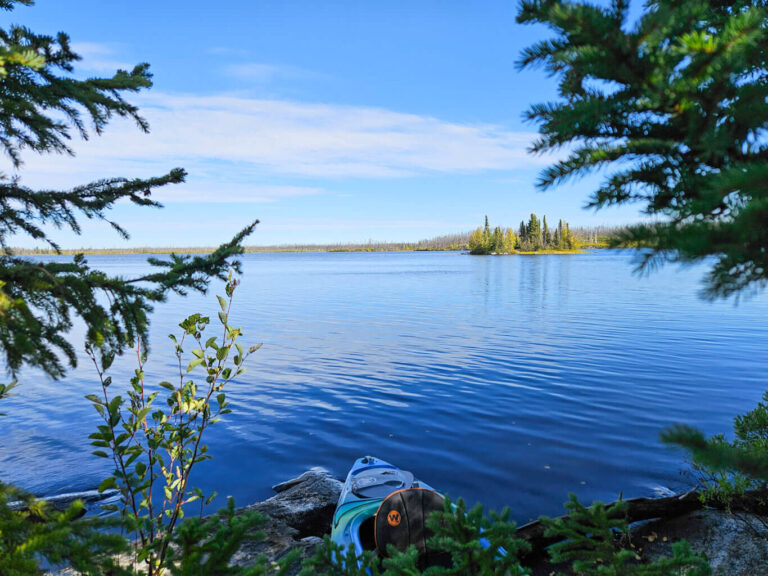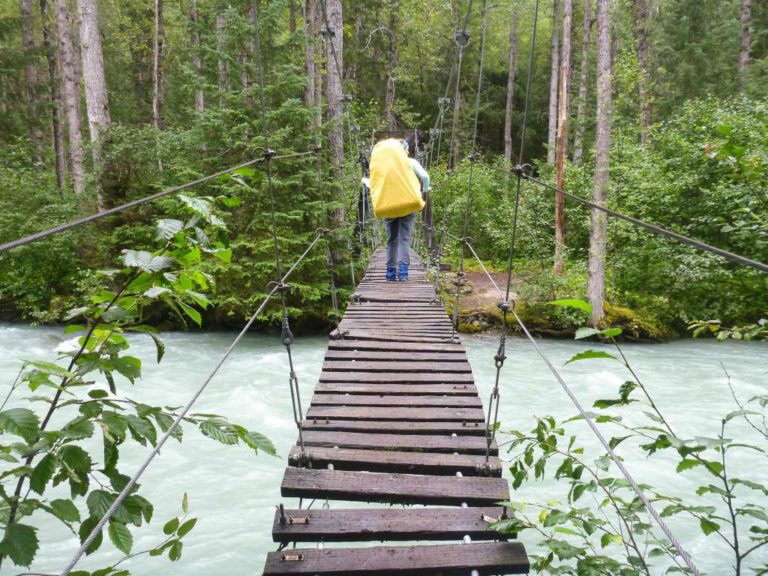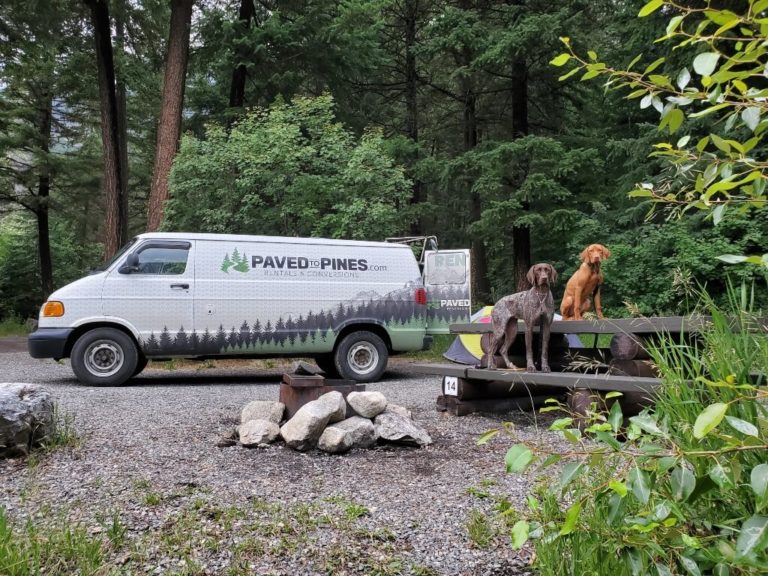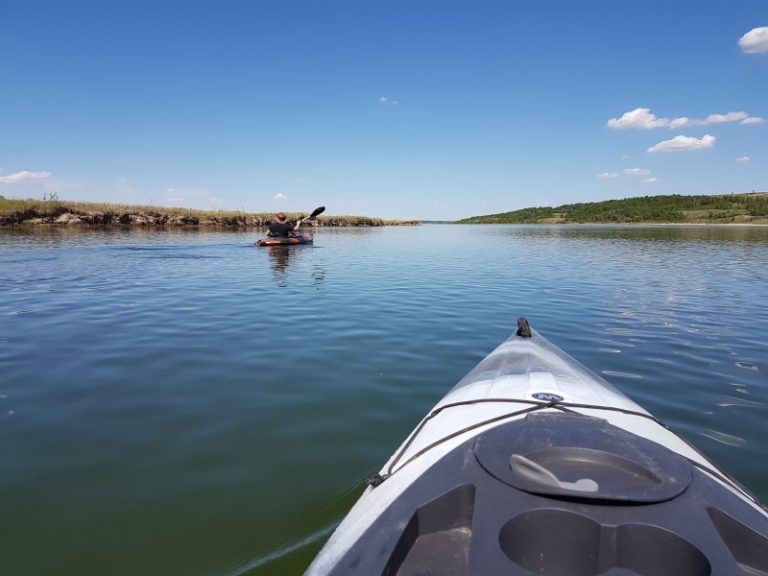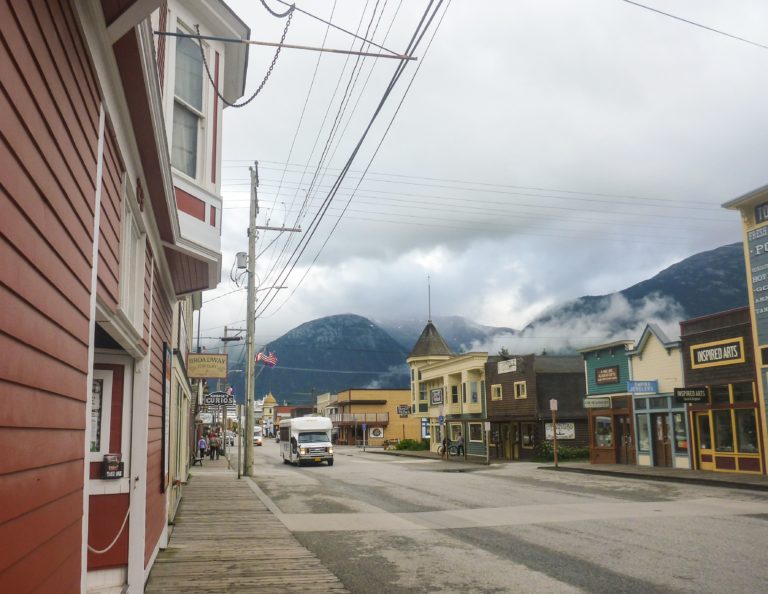A BEGINNER’S GUIDE TO: HIKING
So, you want to start hiking but don’t know where to start? This post will help you with the very basic first steps to getting out on the trail. It really is as simple as picking a trail, throwing a few things in a pack, and walking out the door!
Trying something new can be overwhelming and often times, that first step is the hardest to take. Since I’m all about getting people to step out of their comfort zone despite fear and uncertainty, I decided to start something new on the blog. My “Beginner’s Guide to….” series will focus on activities that I was once afraid to try, but have since come to love. These posts will cover the most basic information and first steps. Hopefully some of you will find them useful!
This post may include affiliate links. As an Amazon Associate I earn from qualifying purchases. Find more info in my privacy policy.
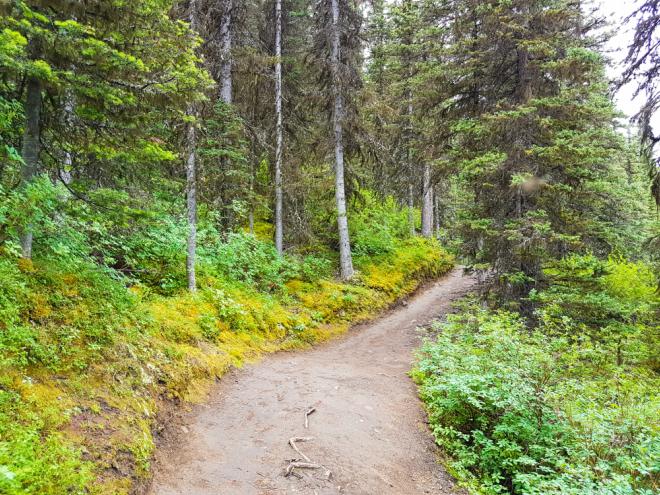
PICK A TRAIL
There are plenty of sites out there that can help you find and choose a trail. Regional/provincial/state/national parks often have well-marked and maintained trails that are great for new hikers. Information is available online and at visitor centers. There are also a number of trail report websites where people can post and share their experiences on different trails. Just do a quick search of “hiking in (your area)” and do some research.
You can choose a trail based on a number of factors. Below are a few questions to ask yourself when picking a hike:
How far do you want to travel?
Are there local hikes in the area or will you have to drive some distance to the trailhead?
What do you want to see?
Are you looking for alpine meadows? Mountain vistas? A trail through the woods? Sometimes, the trail you hike will simply be the trail that’s available to you, but if you have a choice, consider what it is that you’re looking to get out of the hike.
How much of a challenge do you want?
Are you envisioning paved and flat? Are you looking to scramble up boulders? How long of a distance are you wanting to hike?
How remote do you want to be?
Are you looking to get away from it all and find solitude? Or are you more comfortable on a well-used and populated trail?
Don’t be afraid to start small and local. Even if you’re ultimate goal is to summit peaks, it’s totally okay if you start out with short, easy trails. These can be great for testing gear and finding out what your comfort level is.
CHOOSE WHEN TO GO
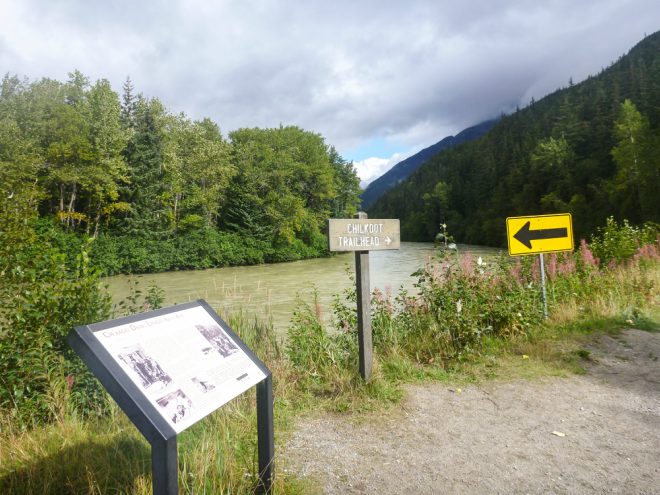
This will mostly depend on weather. Keep an eye on weather reports to determine if it is safe to head out and/or to know what extra gear you may need to bring (extra layers, rain gear, etc.).
The season or time of day may also impact when you go. Some trails in busy tourist areas can get extremely crowded at certain times of year/day. Sometimes it’s best to head out during the shoulder season or early in the morning to beat the crowds.
The scope and intensity of this year’s fire season has also been a reminder to be aware and check out reports on trail closures and air quality conditions during the summer season.
Always remember to consider the length of time a trail will take if you’re planning to head out in the afternoon or evening. Make sure you’re allowing enough time to get out and back before dark.
OTHER THINGS TO CONSIDER
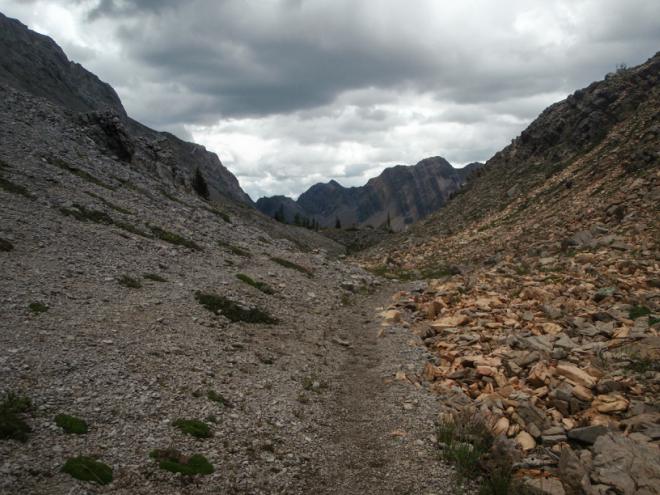
Skill Level
This means of yourself and whoever else you will be hiking with. Plan based on the least-skilled person. Make sure to consider things like total distance, elevation gain/loss, and trail conditions (mud, loose rocks, tree roots, etc.). When you’re first starting out, it can be difficult to assess what you’re capable of or to know what easy/moderate/difficult really mean on trail reports. Read through the information available online or talk to park staff. When in doubt – “family friendly” trails are often a good place to start.
Hazards
During your research take note of and prepare for potential trail hazards. These can include unpredictable weather, sections where the trail is hard to follow, stream crossings, etc. Always know what wildlife is in the area and the best way to react during an encounter.
PACK A BAG
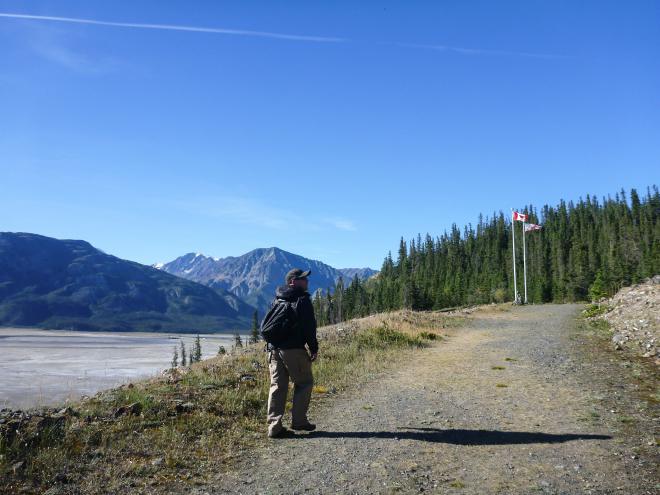
There are a few essentials you’ll want to have with you any time you head out on the trail. The great thing about hiking is that you can generally start out without a huge investment into new gear and then build up your closet over time. Most of the things on the list below you probably already own or can get them through gear swaps or off sale racks.
Day Pack
Look for a pack that fits you well and is comfortable. Generally, a 20-30L pack is ideal for day hikes, depending on your personal needs and what conditions you will be hiking in. REI has a great guide to choosing a day pack for a number of different outdoor activities.
Shoes/Boots
You’ll want something comfortable, supportive, and broken in.
Clothes
Moisture-wicking, lightweight tech fabrics are great if you have them. But for shorter hikes you can wear what you would for a workout or a walk in the park. The only thing I DON’T recommend are cotton socks – they greatly increase your chances of getting blisters. Dress in layers so you can adjust to weather conditions and always have some type of rain gear along for unexpected showers. There’s nothing wrong with looking fab on the trail, but this a time when you’ll want to choose comfort and functionality over style.
Food
Take what you need for the expected length of time you’ll be on the trail, and then some. You’ll want extras in case you end up getting stuck on the trail or if it’s just taking longer than you thought. Some good options:
- Good ol’ trail mix
- Beef jerky
- PB&J sandwiches or wraps
- Protein or energy bars
- Dried fruit
- Carrot or celery sticks
Water bottle/bladder and treatment option
If you can carry enough water for the day, that’s great! But it’s always a good idea to carry a water treatment option in case you run out, spill it, or pop a hole in your bladder. Throw in a pack of treatment tablets or a filter for those times you need to restock along the trail. I love my Sawyer Mini – it’s lightweight, compact, and inexpensive.
First aid kit
It doesn’t have to be anything fancy (unless you’re planning on doing surgery trailside). As long as you have enough to clean and cover wounds until you get back to civilization, you’re good to go. I use this one by Adventure Medical Kits. Ace bandages and a small bottle of painkillers are never a bad idea either.
Bathroom kit
Toilet paper, hand sanitizer, and a small garden trowel. Pack out or bury toilet paper (hence the trowel). Always go 200 feet away from trails, water sources, and campsites to answer the call of nature. Try to stay on durable surfaces (rock, gravel) when possible. Dig a cathole about 6X6 inches (preferably in rich, dark soil to speed decomposition) and bury human waste and TP.
Map and compass
Many people use their phones for this purpose now. I still like to have the old school compass and a paper map along in the event that I lose my phone or the battery dies.
Emergency kit
It’s always a good idea to be prepared. If you find yourself in a situation where you unexpectedly have to spend the night outside you’ll be glad to have a few things to get you through. A small, lightweight tarp and some rope can act as a shelter. A flint/lighter/waterproof matches and some kindling (tampons work great!) will help get a fire started. A knife is useful for so many things. This is also why you want to throw extra layers of clothes/rain gear in your bag.
Hiking poles
These are optional but I love mine. They can help with balance, take pressure off the knees (especially on downhill sections), prevent your hands from swelling, and add in an upper body workout.
Other Useful Items
- Sunscreen
- Bug spray
- Lip gloss
- A bandana or buff
- Sunglasses
- Hat
- Gloves
- Camera
- Headlamp (I love my Biolite Headlamp 330)
LEAVE NO TRACE
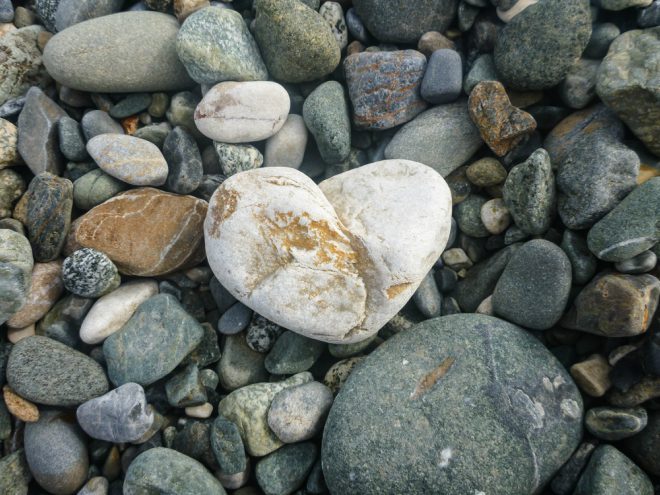
No guide to hiking would be complete without a reminder of LNT principles. Many new hikers are unaware of best practices and may be unknowingly contributing to things such as erosion, pollution, and habitat destruction. I know I’ve made mistakes and I’m always striving to learn more about how I can enjoy the outdoors without having a negative impact. I’ll share a few points here. For more complete information, head over to the Leave No Trace site.
Take only pictures – DO NOT pick or move flowers, rocks, sticks, etc.
Leave only footprints – pack out what you pack in. This means food packaging, garbage, and food waste. Even if it seems “natural” (like an apple core for instance) it is not natural to the area and can take weeks/months/years to decompose. It can also cause a problem if animals start to associate trails and hikers with food.
Stay on the trail – going off trail to take a shortcut or avoid mud can cause damage to vegetation and contribute to erosion.
Respect wildlife – DO NOT feed, approach, or crowd a wild animal. Always observe them calmly and from a distance. Know what types of wildlife are present in the area in which you are hiking and learn the best way to deal with an encounter. Remember that you are simply visiting their home – act like any good house guest would.
Be considerate of others – nobody goes out into nature to listen to loud, overbearing people. When traveling in a group, avoid taking over the trail or talking in overly loud voices. Learn a bit about hiking etiquette and trail rules in the area you are hiking in before you head out. Be friendly and courteous.
Be prepared – knowing your route, trail conditions, potential weather, and possible hazards as well as packing properly are an important part of LNT. Being prepared can be the difference between a pleasant hike and an emergency airlift.
GET OUT THERE
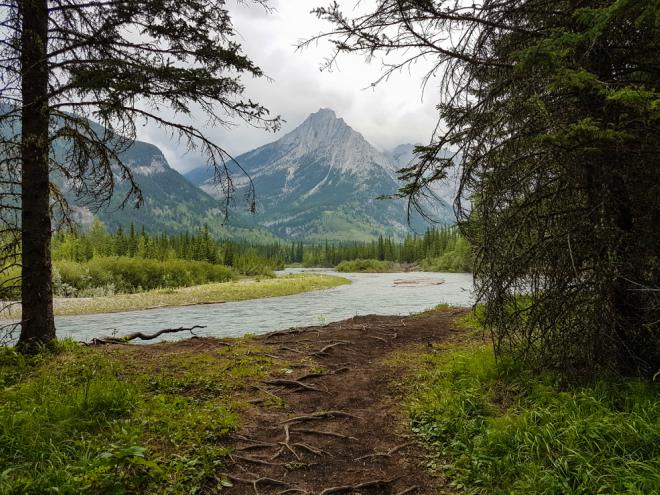
If you’re now feeling ready to tackle that trail, great! Go for it! Just remember to leave important info with someone you trust. This should include:
- Where you’re going
- What route you’re planning to take
- How long you expect to be gone
- What you’re wearing
If you’re still feeling a bit hesitant, here are a couple of ways to boost your confidence:
Take a class
Either online or in person, there are a number of classes out there that can make you more comfortable with getting out in nature. You can start with a general basics to hiking type class or hone specific skills like navigation, wilderness first aid, or identifying plants.
Join a group
Another great option for those who don’t want to hike alone but can’t find anyone to go with is to join a local hiking group. Do a quick search for your area and you may be surprised to find that there are clubs, groups, and organizations all over who plan and lead group hikes for people of all skill levels. It’s a great way to get your feet wet and learn a few things from more experienced hikers.
I hope this guide is helpful and encouraging to those new to hiking. Remember, you don’t have to be a super athlete or walk out of and REI geared up to climb Everest to start hiking. Anyone can get out and enjoy nature!
If you have any questions or if there’s anything I missed, comment below!
More hiking resources:
More beginner’s guides:
